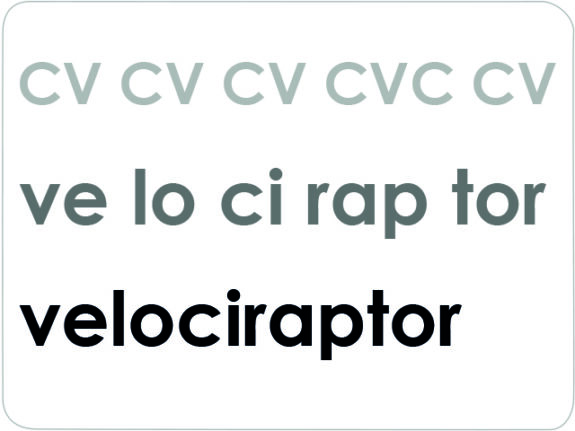
Words
The word, word, is problematic in the sense that it includes too much. If it seems obvious what might be a word, it is much less obvious what a word is.
Building words
Most words have an easily identifiable ‘stem’ or ‘root’ in a form like house or compute, as one old and one newly added example. But both can be built on’ by what is known as the ‘morphology’. In English this is uncommonly simple with only one set of sounds used to mark the difference between house and houses, and another set to mark the difference between compute and computed.
BAY, as the first syllable of baby, is not just a possible word, but a real one. But the second syllable, BI, is only a syllable and not a possible word, because apart from the and a which are special cases on independent grounds, all one syllable words in English have either a final consonant or a long vowel.
Catch seems obviously one word. But what about caught? It refers both to the act of catching and to a past time-scale or tense. In a similar way, broke is obviously related to break as the past tense form. Caught and broke both seems to contain two elements, what is known as a ‘root’ and a past tense element – in this case, two ‘morphemes’, as these are known.
Morphemes include the ‘S in “He’s a jolly good fellow”, the ‘D in “I’d. be careful”, the ‘LL in “I’ll be there tomorrow”, and the contracted marker of negation in N’T in “Don’t do that.”
A simple thought experiment. A says to B: “Do not do that!” B responds “What was the first word you said?” To which, the only true answer is “Do”. A might follow with: “But don’t!” To which B responds: “What was the last word you said?” Now A has again only one true answer, “Don’t.” Although don’t represents a contraction of do and not, to answer “Not” would be at best perverse. And to try and say N’T would be no answer at all. The process of contraction has formed one word out of two. So how many words does this represent?
What may be a problem for some first language learners is to distinguish between words and morphemes. Words often signal their identity as words by adding syllables, as in doggy and horsey. But this is different from the addition of elements, as in stop as stopped, stops, or stopping. Exactly what can be added to which words is something which has to be learnt. For most children, this is not problematic. There are enough clues in the -S, -ING, -ED additions. But for some children these clues are seemingly not enough.
There is another key distinction between doggy and woof woof or bow wow, cat and miaow, cow and moo, train and choo choo or chuff chuff, where what is often represented to children as the sound is sometimes also taken to be a childish name.
Diagnostically, the child may not notice one or more of these things. In the sound system of English, the final syllable of bottle is part of the word (by a cross-linguistically unusual syllable structure) – with the effect that it is said as BOT – or as BOP with the lip articulation of the B copied into what becomes the final sound. The normally developing child is highly sensitive to the unstressed second syllable, as one of the special characters of the target language. Not noticing this may be part of a larger problem. The ‘metalinguistics‘ are significant
More generally, the non-obviousness of what a word is is obviously a significant question for the first language learner.

